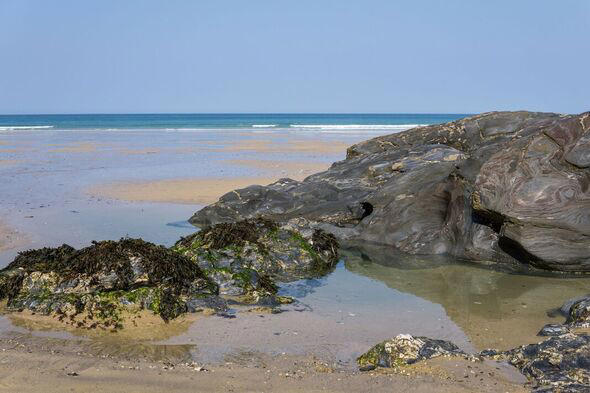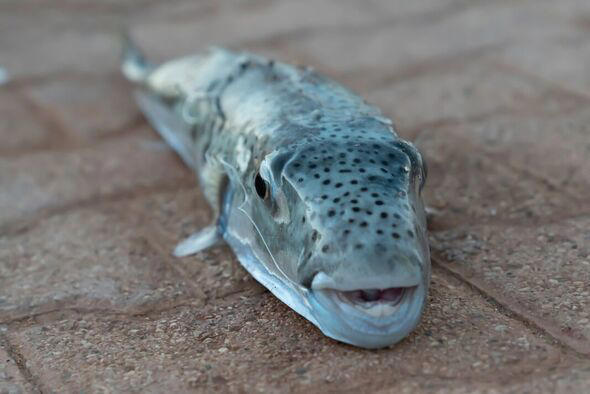Story by Charlie Hart • Yesterday
Provided by Narcity Québec
Police in Taber, Alberta spent their morning dealing with a pretty wild incident, when 20 ostriches started running loose in the street and causing mayhem.

In a statement, Taber-Vauxhall RCMP said just before 8 a.m., they'd received reports of approximately 20 ostriches running loose in the road around Highway 39 area on Thursday, November 24.
Police said the huge birds had gotten loose, escaping from their enclosure within Taber town limits.
"The group made their way out of town where they created traffic hazards," Taber Police said in a Facebook post.
One of the ostriches was hit and killed on the road.
A local from Taber captured a video of the moment where someone is seen leaning out of the passenger window of an RCMP vehicle to try and grab one of the large birds.
Police said the huge birds had gotten loose, escaping from their enclosure within Taber town limits.
"The group made their way out of town where they created traffic hazards," Taber Police said in a Facebook post.
One of the ostriches was hit and killed on the road.
A local from Taber captured a video of the moment where someone is seen leaning out of the passenger window of an RCMP vehicle to try and grab one of the large birds.
However, the ostrich manages to escape and continues running down the street, seemingly pretty unbothered by the whole attempted capture.
According to police, the person seen in the video is the owner of the ostriches. Safe to say, they're probably having a rough day.
Since the initial reports of the ostriches breaking loose, police have been working with the owner to recapture the birds.
By 12:30 p.m., police said most of the ostriches had been secured and officers would be on the scene to help the owner capture the remaining birds.
So if you're driving around the Taber area today, be sure to watch out for any loose ostriches on the way and drive safely.
'Not a prank call': RCMP chase down escaped ostriches running amok in Taber, Alta.
“Oh my gosh, this is the first time I’ve ever seen this,” says a woman’s voice in the video.
The ostrich scrambles to its feet and takes off — hotly pursued by another police cruiser.
In the sanitized style of police communications, the Taber Police Service announced on Facebook that the birds “made their way out of town where they created traffic hazards.”
While unusual, police in rural Alberta are often involved in recovering livestock that have gone AWOL. They’re just usually cattle or horses, said Savinkoff. It was, he said, the first time any of the officers could recall having dealt with ostriches on the loose.
“Certainly I’ve never dealt with it,” said Savinkoff.
“Missed that, must have had my head in the sand??” joked user Alf Rudd.
“The names of the ostriches were not released to the public because their family has connections to the police,” said Douglas Carle.
Ostrich escapes are not entirely unusual. Earlier this year, around 80 of the flightless birds absconded from a farm in Chongzuo, China; video of that incident shows the birds sashaying down the darkened streets.
Story by Tyler Dawson • Yesterday
Mounties in the Alberta town of Taber were hit with an unusual task Thursday: Rounding up a herd of ostriches that escaped from a farm.

RCMP officers had to round up some escaped ostriches in Taber, Alta.© Provided by National Post
And, like the mounted police of old, they got their man.
“We received multiple calls,” said Cpl. Troy Savinkoff with the southern Alberta RCMP district. “A lot of the calls we received were immediately with the caveat ‘This is not a prank call.'”
The clarity, doubtless, was important. The herd ran amok through Taber — perhaps best known for its bylaw against swearing, screaming or yelling in public — after they got out of an enclosure shortly before 8 a.m. One ostrich, sadly, was killed on the highway nearby where they escaped.
It took more than five hours to catch them all.
A video posted to social media shows an RCMP truck chasing after one ostrich, while a man — apparently the owner — leans out the passenger window and grabs it around the neck. The ostrich is then hauled to the ground as the truck comes to a stop, but the farmer loses his grip.
Mounties in the Alberta town of Taber were hit with an unusual task Thursday: Rounding up a herd of ostriches that escaped from a farm.

RCMP officers had to round up some escaped ostriches in Taber, Alta.© Provided by National Post
And, like the mounted police of old, they got their man.
“We received multiple calls,” said Cpl. Troy Savinkoff with the southern Alberta RCMP district. “A lot of the calls we received were immediately with the caveat ‘This is not a prank call.'”
The clarity, doubtless, was important. The herd ran amok through Taber — perhaps best known for its bylaw against swearing, screaming or yelling in public — after they got out of an enclosure shortly before 8 a.m. One ostrich, sadly, was killed on the highway nearby where they escaped.
It took more than five hours to catch them all.
A video posted to social media shows an RCMP truck chasing after one ostrich, while a man — apparently the owner — leans out the passenger window and grabs it around the neck. The ostrich is then hauled to the ground as the truck comes to a stop, but the farmer loses his grip.
“Oh my gosh, this is the first time I’ve ever seen this,” says a woman’s voice in the video.
The ostrich scrambles to its feet and takes off — hotly pursued by another police cruiser.
In the sanitized style of police communications, the Taber Police Service announced on Facebook that the birds “made their way out of town where they created traffic hazards.”
While unusual, police in rural Alberta are often involved in recovering livestock that have gone AWOL. They’re just usually cattle or horses, said Savinkoff. It was, he said, the first time any of the officers could recall having dealt with ostriches on the loose.
“Certainly I’ve never dealt with it,” said Savinkoff.
The incident led to a number of jokes among residents on the Taber police Facebook page.
“Missed that, must have had my head in the sand??” joked user Alf Rudd.
“The names of the ostriches were not released to the public because their family has connections to the police,” said Douglas Carle.
Ostrich escapes are not entirely unusual. Earlier this year, around 80 of the flightless birds absconded from a farm in Chongzuo, China; video of that incident shows the birds sashaying down the darkened streets.
















